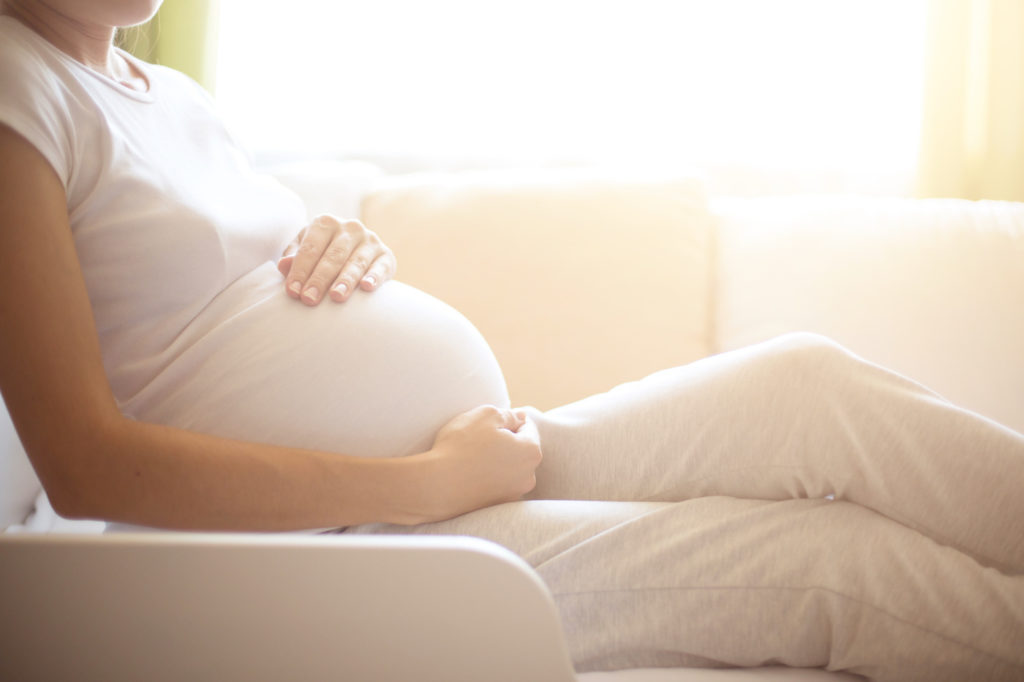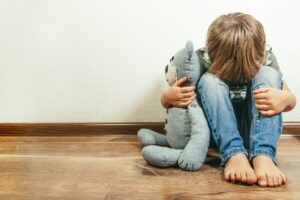In the days since the Supreme Court handed down its groundbreaking decision in Dobbs v. Jackson Women’s Health Organization, which overruled Roe v. Wade and declared that the Constitution contains no right to an abortion, my mind has been a whirl of emotions. As a lawyer, I am filled with gratitude for Justice Alito’s majority opinion, which deftly dismantles any notion that the foundation on which Roe stood was ever anything more than quicksand. As a woman, I rejoice, because with this decision, the generational curse which has told all women that to achieve equality, they must forsake their fertility—indeed, their very femininity—has been broken. Without a constitutional right to abortion as a convenient fallback (or scapegoat, depending on your point of view), those who identify as pro-life and pro-choice alike must now begin in earnest the hard work of developing truly pro-woman and pro-family policies that support mothers and children before, during, and after birth. But as a blind person, I am left with a persistent, nagging concern: on the brink of this new dawn of freedom for women and girls, will the lives of unborn disabled babies be left behind?
Let me explain. Though Dobbs declared no constitutional right to abortion, it did not end the matter. Rather, it simply returned the abortion question to the states. This means that, going forward, those on both sides of the issue will advocate to state legislatures what, in their view, constitutes the best abortion policy. Some will continue to push for a maximalist approach to permitting abortion, while others will begin working for a world in which states prohibit abortion under any circumstance, but neither outcome is likely. It is far more probable that the vast majority of states will settle somewhere in the middle, at least for the time being. But it is here in this middle ground that the unborn disabled risk being most exploited, and where pro-life individuals must be most on guard, lest the disabled become an unprotected pawn in the continued battle for abortion access.
Before Dobbs, the media were already rife with stories extolling abortion as a way to prevent children who would be “confined” to a life of “unnecessary suffering” from entering the world. Under this line of thinking, abortion is the compassionate choice, and carrying the child to term is depicted as heartless at best, cruel at worst. To make matters worse, this view is espoused not only by able-bodied parents who made the choice to abort, but by disabled people themselves. In a post-Roe world, we can expect these stories to proliferate as a politically expedient distraction.
Rather than forcing Americans who espouse a middle-of-the-road approach to confront what abortions actually entail—the intentional ending of a human life—these stories pull at the heartstrings and portray abortion as a terrible last resort to protect “desperately wanted” children from “inhumane” conditions. If successful, advocates can rely on these stories to broaden the commonplace “life and health” exceptions to existing abortion laws, which in turn can be used to justify more and more abortions that do not implicate disability. My fear is that these efforts may succeed if pro-lifers subconsciously have more in common with the broader culture on the question of disability than they’d like to admit.
Start your day with Public Discourse
Sign up and get our daily essays sent straight to your inbox.First Principles
Unpacking this statement requires examining some first principles, as well as how the disabled fit into application of those principles. For many in the pro-life movement, the life ethic holds that every life is sacred because of what a human person is, not what a human person does. But if we are all honest with ourselves, we must admit that though this tenet of life is easily professed with our lips, it is much more difficult to believe in our hearts. Do I really and truly believe that the life of a person who cannot see, use the toilet, obtain gainful employment, or communicate on an intellectual level is as valuable as mine? Or is the prospect of living that way something I cannot imagine? Do I find disabled people “inspirational” because I cannot contemplate “bearing” such a heavy load? If the answer to questions such as these causes us to pause in discomfort, then we must admit that we have not fully and completely internalized the innate value of human life.
When we are called to reflect upon our own subconscious biases, we can more effectively and meaningfully advocate for the equal value of all human life.
This is where those with disabilities come in. Inviting those with disabilities into our personal relationships encourages us to contemplate the value of life when certain options are categorically off the table, or if certain aspects of suffering become an unavoidable part of daily life. When our principles are tried by fire in this way, when we are called to reflect on our own subconscious biases, we can more effectively and meaningfully advocate the equal value of all human life. Not only will we be taught just how often we overestimate the burdens of disability and underestimate the joys, but we will also have our ability to love radically expanded through encounters with those who, through no fault of their own, possess none of the characteristics deemed “valuable” by society or who have no potential ever to reach those benchmarks.
In short, exposure to people with disabilities enables us to transform the abstract principle of human dignity into a lived reality. Thus, we cannot move from rationally understanding the value of life in all its diversity, complexity, and beauty to living it out in our actions unless we come to know, befriend, and yes, even dislike people with disabilities—that is, until we invite them into the entirety of the messy human experience.
Now more than ever, the pro-life movement must recognize and rectify our failures in this area. Unfortunately, many of us lack this necessary exposure to disabled people in our daily life, leaving us just as vulnerable as those who are pro-choice to subconsciously devaluing their lives. Access barriers and refusals to accommodate keep people with disabilities out of our social, educational, and employment spaces, including those run by pro-life entities. Fear and lack of familiarity cause us not to approach. And our squeamishness in the face of suffering urges us to avert our gaze. But if we don’t have disabled friends, loved ones, colleagues, church members, or customers in our lives, how can we ever hope to convince a terrified mother, newly armed with a life-altering diagnosis and bombarded by her doctors to abort, that there is another way? If we do not have a realistic understanding of the time, energy, and resources it takes to raise a profoundly disabled child, or if we have never walked the road with someone who carries a terminal child to term, how can our hearts possibly contain the compassion and charity necessary to assist a stranger?
If we do not take a serious accounting of our approach to disabled lives outside the womb, we stand a huge chance that the lives of unborn disabled children will remain a viable bargaining chip in state legislatures across the country. If we only understand the intrinsic worth of disabled lives with our rational intellect rather than also through our personal experiences, then we will lack the adequate drive to advocate their protection, and we will risk allowing the right to kill a disabled child to remain a temporary or permanent part of the compromises forged at the state level.
Building a Culture of Inclusion
Thankfully, though some solutions to this problem require significant time and effort beyond the scope of one individual’s ability to change, many are easily within our respective grasps.
First and foremost, take an inventory of your own life. Are you close with either a person or the family of a person with a significant physical disability? If not, change that, and the sooner the better. If you think through your life and conclude “there simply are not people with disabilities at my church, gym, place of employment, or daughter’s school,” realize that the correct answer either is “yes, there are, I just don’t know them,” or “no, but there should be.” In either case, each one of us is responsible for fixing those errors.
If we only understand the intrinsic worth of disabled lives with our rational intellect rather than also through our personal experiences, then we will lack the drive to advocate for their protection.
Second, educate yourself on issues surrounding accessibility and inclusion by reading about the lived experiences of disabled people. Though you might not agree with every word written by every author, that doesn’t mean that everything written is wrong. The more pro-life people understand accessibility and equal inclusion, the more we can create the possibility for disabled people to venture forth into public life. With that increased participation will come change in our own hearts, cementing our belief in the unique and unassailable value of each disabled person, regardless of productive capacity or intellect.
Third, examine your sphere of influence and take ownership over direct ways you can make a palpable difference in the lives of disabled people or their families. Each one of us has the ability to make at least one concrete change in the institutions where we work, learn, and socialize. Individually, these changes may seem insignificant, but collectively they will go a long way toward shifting our social mindset from one that excludes by default to one that assumes inclusion.
Fourth, do not dismiss your children’s questions about disability. I cannot count the number of times when a child innocently and inquisitively asks about my cane, only to be met with a harsh rebuke from an adult caregiver. This response sends the harmful message that there is shame or even fear in disability, and that it’s something we can’t discuss in polite society. Children will carry that influence into their social circles and to any future interactions with disabled people. We need to emphasize to our children that there is no shame in using ventilators, wheelchairs, canes, or feeding tubes; in fact, these devices are beautiful because of their ability to allow disabled people to live full and independent lives. And so, I urge you to address your children’s questions head-on. Explain to them objectively what disability is, and use it as a moment to reiterate that though some persons might in some ways look or act differently, in the way that matters most, they are just like your child.
With the handing down of Dobbs, we in the pro-life movement face our great reckoning. We have said for decades that women deserve better than abortion, and now is the moment for us to make good on that sentiment. The next few months and years will make or break the willingness of pro-choice women to trust us when we say that we will support women who are abused, impoverished, or abandoned; that women should not live in fear of dying from pregnancy and miscarriage complications; and that if unjust employment, housing, and educational policies leave women stranded, they can count on us not only to help them get back on their feet, but also to change those policies.
But as we take stock of the hard and necessary work that lies ahead, we must not forget those women who will be pushed toward abortion because they fear carrying and raising a disabled child. Those children call us most deeply to live our fundamental belief—that all life is worth protecting, regardless of circumstance. We will never completely succeed in making that principle a reality if we leave them behind.













